Beyond the Beach: The Tropical Paradise of Mauritius Is a Historic Hub for the Equestrian Set
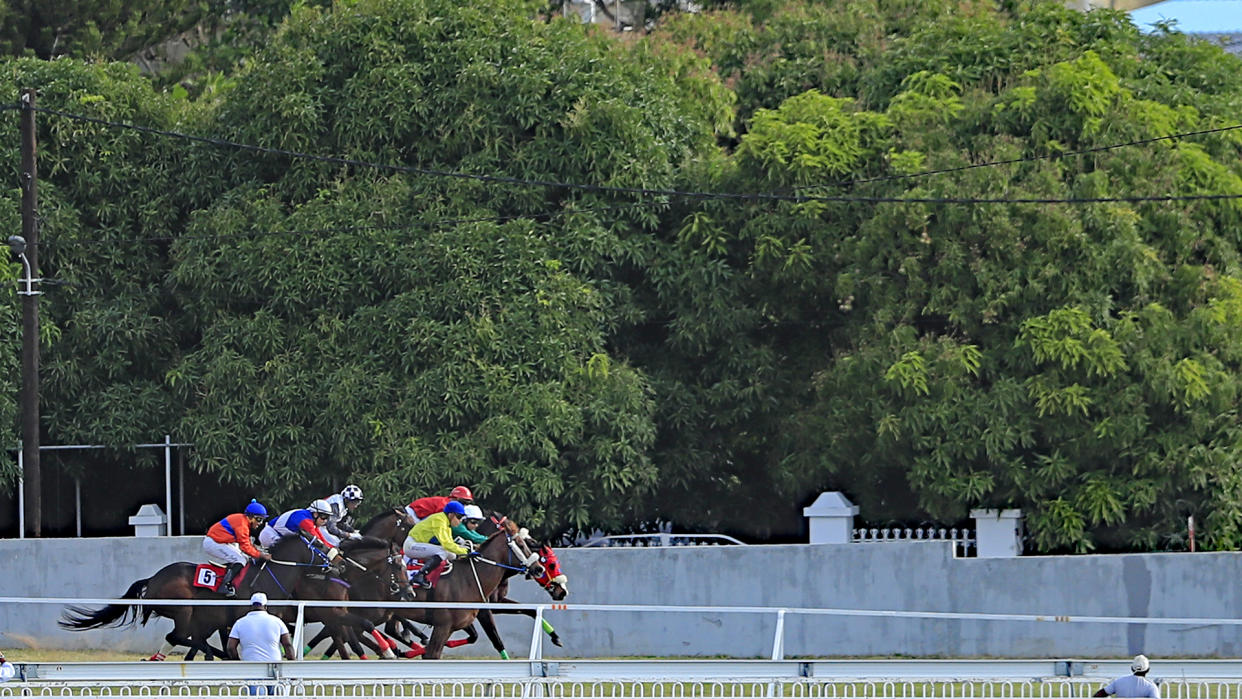
Granted, it’s the beaches that’ll woo you first.
Even from the narrow window of the jet, those pearly shores and crystalline waters, which seem to appear in the Indian Ocean out of nowhere, look plucked from a postcard. The grassy sugarcane fields and verdant mountains, which vividly rise up into the sharp blue sky, will dazzle too.
More from Robb Report
Inside a Striking $30 Million Nevada Horse Ranch With a 'Floating' Dining Room
How This New Extreme Sailing League Is Making Boat Races Feel More Like Formula One
Inside a Stunning 200-Acre Oregon Horse Farm That Just Listed for $19.5 Million
Mauritius, south of the equator and east of Madagascar, is rimmed with chalky beaches and reefs freckled with exotic fish, garnering a reputation as a quintessential island getaway. Ads and brochures will broadcast how it’s a family-friendly destination with water sports and waterfalls. And they wouldn’t be wrong. But like so many tropical islands, it’s not all coconut palms and daiquiris. Mauritius is a lot more textured than its reputation might suggest.

Yahia Nazroo
The island’s complex history—it was colonized three times, by the Dutch, the British and the French—and particular geography have resulted in a rich mix of cultures (Hindu, Muslim, Christian, French, Creole and Chinese), which is often disregarded by visitors. Evidence of the island’s diversity won’t be found behind the towering walls of beach resorts but instead on the streets and in the throbbing markets of Port Louis, where the jumble of cultures is unmistakable. Even more so at the Champ de Mars, remarkably the second-oldest racecourse in the world (behind Chester in the UK), which draws foreigners and locals alike, no matter their background. “It unites the [island], irrespective of your social status,” says Soun Gujadhur, a trainer whose family owns the prestigious Gujadhur Stable—the island’s oldest—and has been involved in horse racing in Mauritius for over 100 years.
The electric atmosphere at Champ de Mars, in the capital of Port Louis, is what really lures the crowds. It’s hard not to be enthralled by the action in a stadium where the racetrack is a stone’s throw from the grandstand. Here, the horses pound past the onlookers at lightning speed, and spectators, hanging over the rails, betting cards in hand, are almost sprayed with dirt. When the horses pass the finish line, the crowd erupts, making the kind of clamor you’d expect to hear at a football game. “From a jockey’s perspective, it’s amazing how close you are,” says Mark Neisius, a former jockey and winner of the Maiden Cup, Mauritius’s most prestigious race. “It’s unique how fanatical the crowd is.”
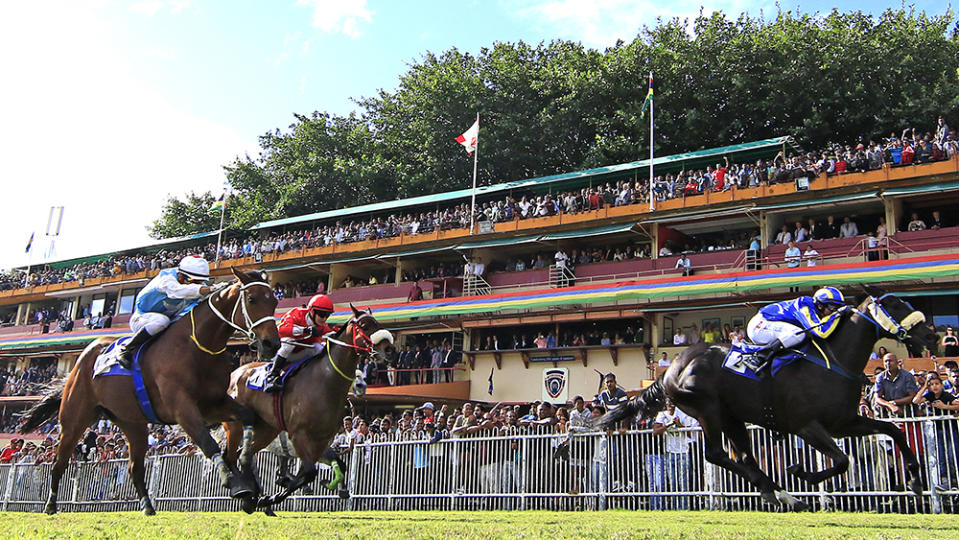
Yahia Nazroo
Mauritians are nuts about horse racing. “I’ve ridden in eight countries around the world, and I’ve never felt a passion like this,” says Derreck David, a jockey who moved from South Africa to Mauritius nine years ago to race. It’s considered the national sport of Mauritius. But it’s not just locals who attend. The premier races have attracted royalty, including the UK’s Princess Anne and Sarah, Duchess of York, and former Arsenal soccer player Robert Pires, as well as foreign leaders from all over Africa and the Middle East. The stadium, which saw its first contest in 1812 and was the epicenter of independence celebrations in 1968, often hosts races when dignitaries visit the island. Not only is an outing to the track a majestic affair that offers a window into Mauritian culture, but the setting is also ridiculously scenic. Surrounded by lush mountains and in the shadow of Le Pouce, the island’s distinctive thumb-shaped peak, Champ de Mars is worthy of a visit in its own right.
Anyone could arrive at the stadium in a T-shirt and sandals, but that’s not to say spectators don’t dress the part. In the boxes, there’s no shortage of men in tailoring, women in dresses and show-stopping hats. “It’s compulsory to wear a jacket and tie in the Parade Ring and the members area,” says Benoît Halbwachs, secretary of the Mauritius Turf Club, the nonprofit private organization that orchestrates the races. Leading a horse in the ring is considered an extremely prestigious affair, and guests are expected to dress accordingly.
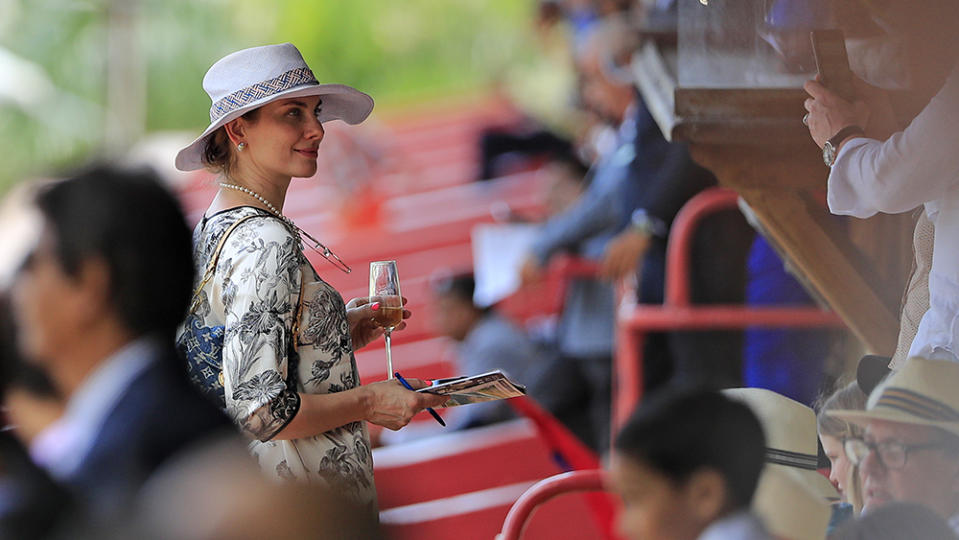
Yahia Nazroo
“It’s one of the few racecourses where you walk up onto the track if your horse has won and lead it back into the paddock. It’s bragging rights, really,” says Neisius. “For owners it’s a glamorous thing.”
More often than not, those owners hail from the most prestigious stables in Mauritius, Gujadhur and Rousset Stable, run by trainer Gilbert Rousset. “If you ride for the Gujadhur or the Rousset stables, you’re riding for the best,” says David, the jockey, adding that they invest in the top horses around (most imported from South Africa). While the Gujadhur family owns most of its equines, at the Rousset Stable, the island’s most affluent residents are frequent partners. “Everyone wants to be involved, even if they own 5 percent of a horse,” says David. The perks: direct access to the jockeys, considered local celebrities, and all the equestrian gossip. (Foreign horse owners tend not to compete because of the lower stakes—a purse of Mauritian rupees is dismal compared to winning US dollars.)
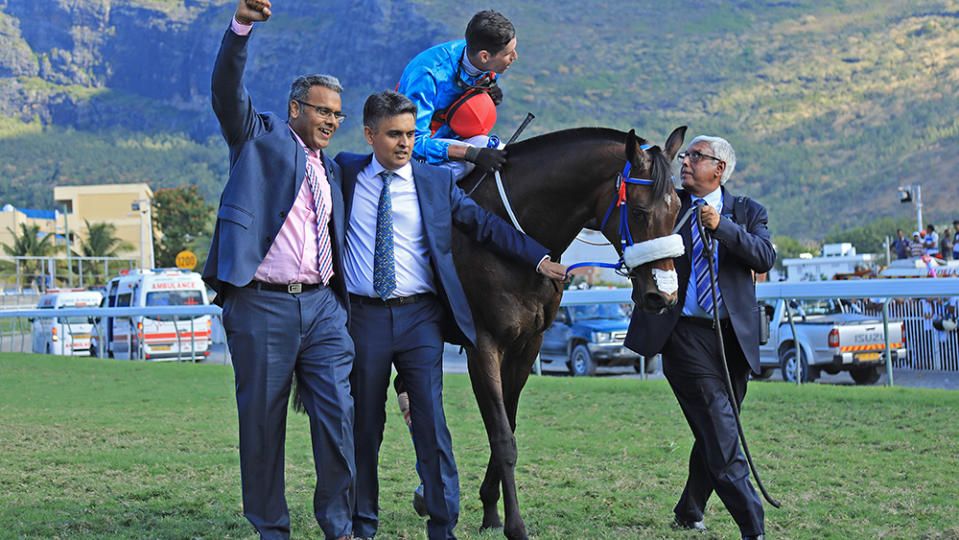
Yahia Nazroo
Tourists who attend typically go for the real crowd-pullers, the four classics: the Duchess of York Cup, the Barbé Cup, the Maiden Cup and the Duke of York Cup. There’s the International Jockeys’ Weekend, too, which draws competitors from all over the globe and closes the season in December. But it’s the average Saturday races that are true testament to how deep the love of the sport runs here. And it’s on these days when foreigners can witness Mauritius’s multiculturalism at its most authentic. “Even these [smaller] events draw the whole population of the island,” says Halbwachs. “It represents a microcosm of Mauritian society.”
From March to December, Champ de Mars draws between 20,000 and 75,000 spectators to each of its roughly 40 race days. The track acts like the unofficial town square. “It’s an open public space,” says Khalid Rawat, former deputy general manager of the Turf Club. “So whenever there’s been a horse race in Mauritius, people could always gain access to the racecourse and even bring their children along.”
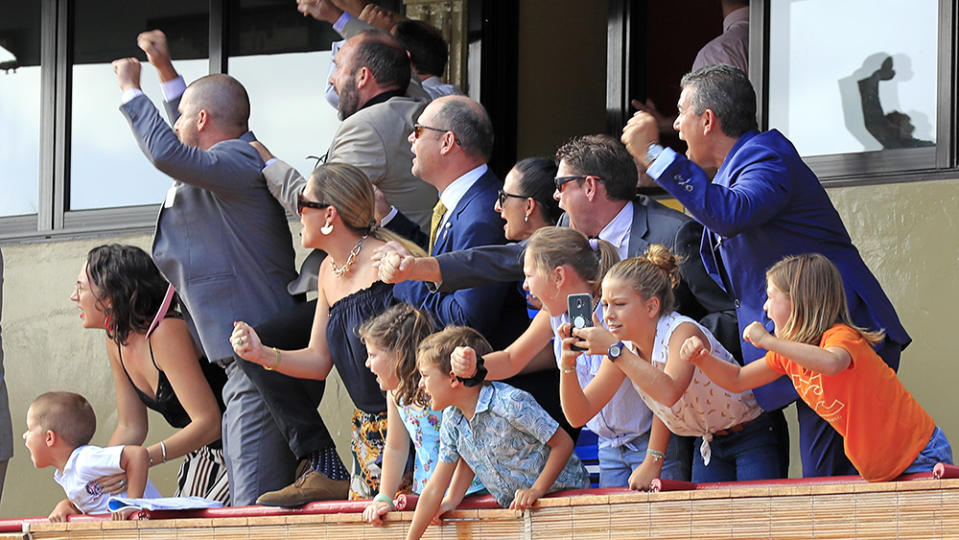
Yahia Nazroo
For many Mauritians, a day at the races is a traditional family affair. “People have become race goers from one generation to the next,” says Rawat, who grew up going to Champ de Mars with his father. The Gujadhur family has passed the tradition through generations to become one of the most elite equestrian families in the country. Gujadhur’s grandfather bought his first horse in 1904; today Gujadhur works alongside his two sons at the clan’s namesake stable, famous for its blue silks seen on many winning jockeys. It’s through tradition and family that “everybody catches the bug,” says Rawat.
Even tourists staying at some of the island’s most indulgent beach hotels, including One&Only Le Saint Géran, are encouraged to venture to Champ de Mars. One&Only can arrange for guests to spend a lavish day in a VIP box at the finish line, with plenty of Champagne and canapés and extras such as a photographer to capture the festivities or special access to the track and jockeys. Even after the race has concluded and the horses are back in their stalls, Champagne is popped and parties at Banana Bar or along the Grand Baie strip often run late into the night.
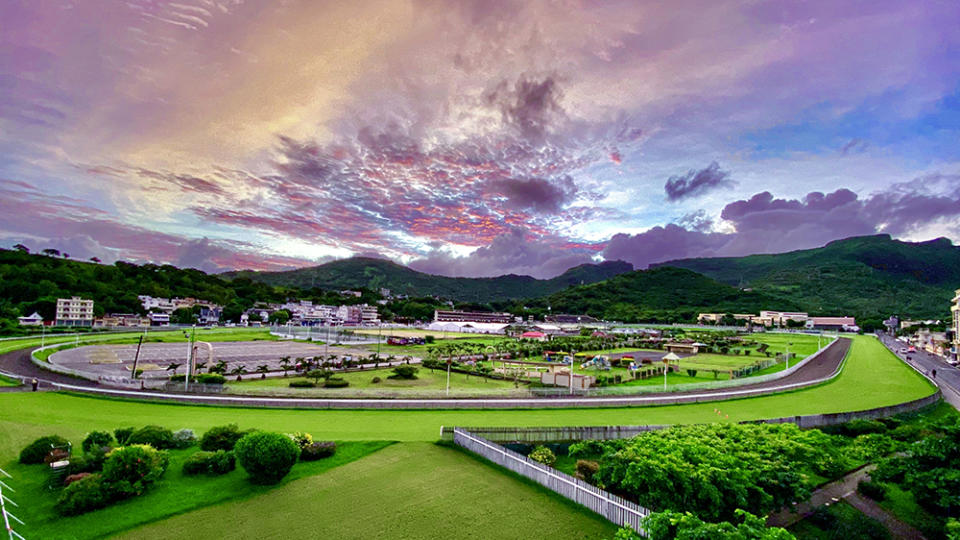
Yahia Nazroo
A day at the races offers just one aperture into Mauritian culture, beyond the balmy beach resorts. Canny travelers forgo piña coladas by the pool for a stroll through Port Louis, where vendors spill out of the effervescent markets, selling spices, mangoes, baskets and more. And then on to the Sir Seewoosagur Ramgoolam Botanic Garden, where water lilies the size of wine barrels float in inky pools, shaded by baobabs and mahogany trees. There are mountains to hike in the Black River Gorges National Park and myriad different cuisines and street foods to try, from dhal puri, riz frite (fried rice) and peeled pineapples with piment sold at the markets to Paris-perfect croissants at patisseries, including Le Fournil in Grand Baie. There’s also no shortage of fresh seafood, with restaurants spinning octopus into local curry recipes and fresh tuna being served on the beach at Indigo at Constance Belle Mare Plage hotel.
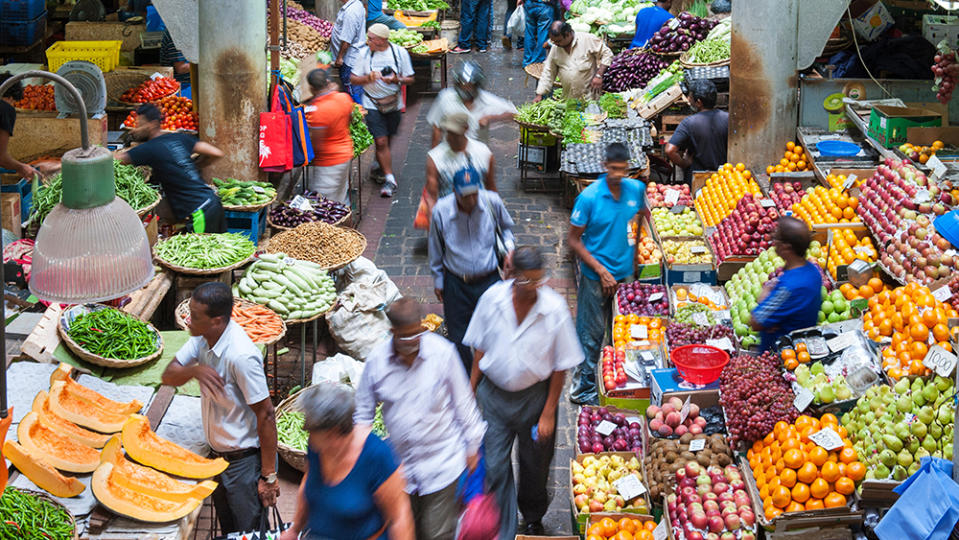
Eric Nathan/Alamy
It’s easy to see why travelers are coaxed to the island by the country’s beaches and spend their holiday rolling from sand to pool. But if that’s all you’re up for, there are plenty of other tropical paradises that are far easier to reach. If you’re flying to the middle of the Indian Ocean, make it count; the real Mauritius is just too fascinating to ignore, horses and all.
Best of Robb Report
The 7 Most Insanely Luxurious Spas in the World, From Tokyo to Iceland
17 Reasons the Caribbean Should Be at the Top of Your Travel Itinerary
Sign up for Robb Report's Newsletter. For the latest news, follow us on Facebook, Twitter, and Instagram.

